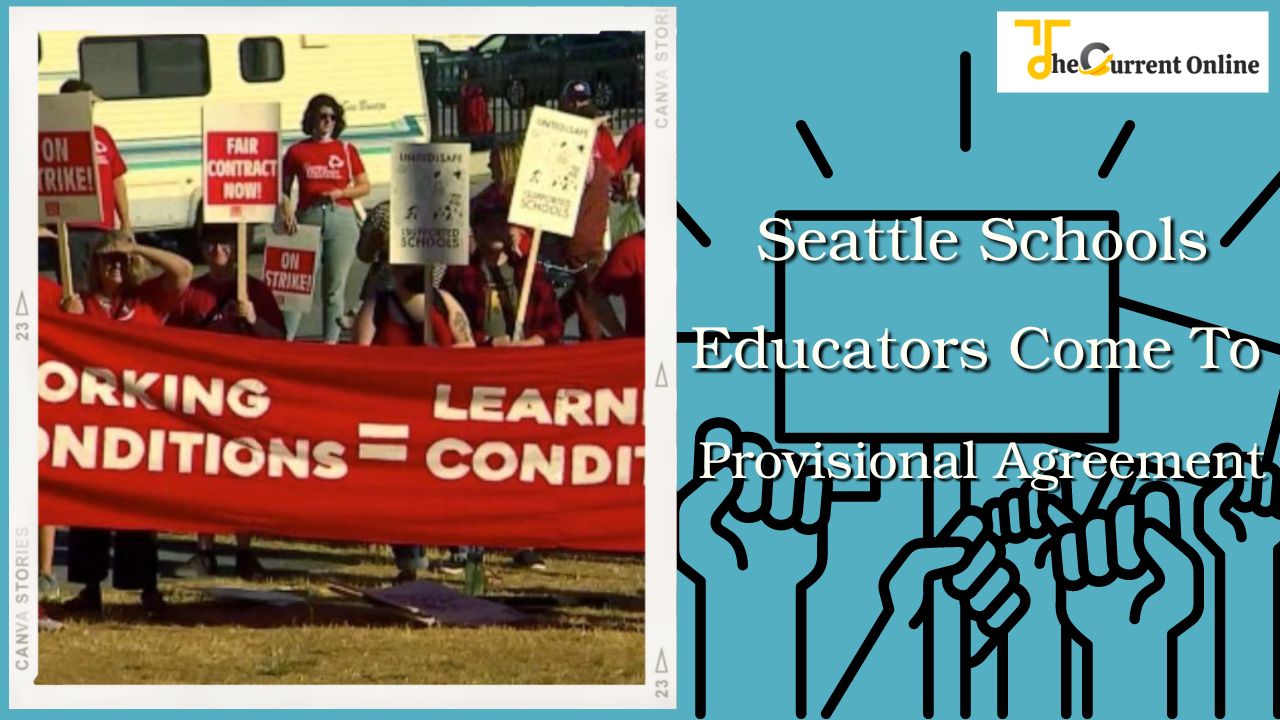In the midst of a strike that caused the start of the school year to be delayed by at least five days while teachers bargained with the district over improvements to classroom sizes, pay, and health services, Seattle Public Schools and the Seattle Education Association have reached a tentative agreement.
Seattle Public Schools announced late Monday that the bargaining teams for SPS and the SEA had reached a tentative agreement. Tomorrow afternoon, we’ll give you an update on the commencement of classes. The staff and students we look forward to welcoming for the 2022–23 academic year.
The educators’ union said members “should all be proud of what we did and what we stood up for” in a statement announcing the tentative deal.
The Seattle Education Association tweeted, “We stayed together, showed our strength, and it worked. “The tremendous amount of community support we received and our unity on the picket lines made all the difference.”
The agreement’s specifics have not been made public.
SPS and SEA bargaining teams have come to a tentative agreement. We will share an update on the start of school tomorrow afternoon. We look forward to welcoming students and staff for the 2022-23 school year. pic.twitter.com/izWOhA9JQx
— Seattle Public Schools (@SeaPubSchools) September 13, 2022
On Wednesday, the first day of classes for nearly 50,000 kids in the Seattle school district, the strike officially started. Schools will be closed on Tuesday, according to a district announcement made earlier on Monday.
The action was taken at a time when teachers are in short supply in schools across the nation and are growingly vocal about their anger over their low pay and lack of appreciation, as well as their difficult teaching conditions that have been made worse by the Covid-19 outbreak.
According to the Seattle Education Association, which represents about 6,000 employees, teachers in Seattle went on strike to demand better special education staffing ratios as well as more support for students, including interpretation and translation services for those receiving multilingual education.
We are teachers. Striking is not something we have much experience with. We don’t want to be doing it. In a video posted to Facebook, teacher Ellen Santarelli stated, “We want to be in our classrooms with our pupils. However, “we are willing to venture beyond of our comfort zones – thousands of steps outside of our comfort zones” to obtain what our pupils need.
Additionally, the union pushed for increased pay, stronger protections against burnout for teachers, and a cap on some class sizes.
For days, teachers stood on the picket lines with posters reading “make mental health a priority,” “finance vital assistance,” and “children should be able to see a nurse any schoolday.”
The Ridgefield School District in Washington State will likewise be closed on Tuesday due to ongoing contract negotiations between the two parties.
Teachers in the Ridgefield district, which enrolls roughly 3,850 children close to the Oregon border, went on strike Friday in support of improved special education services, increased mental health support, and a stronger student intervention program.
They joined thousands of other educators throughout the nation who, in recent weeks, also went on strike to demand higher pay and better working conditions in the classroom.
